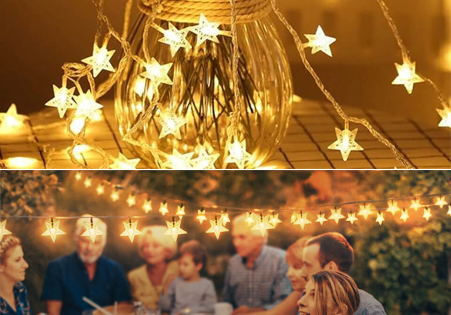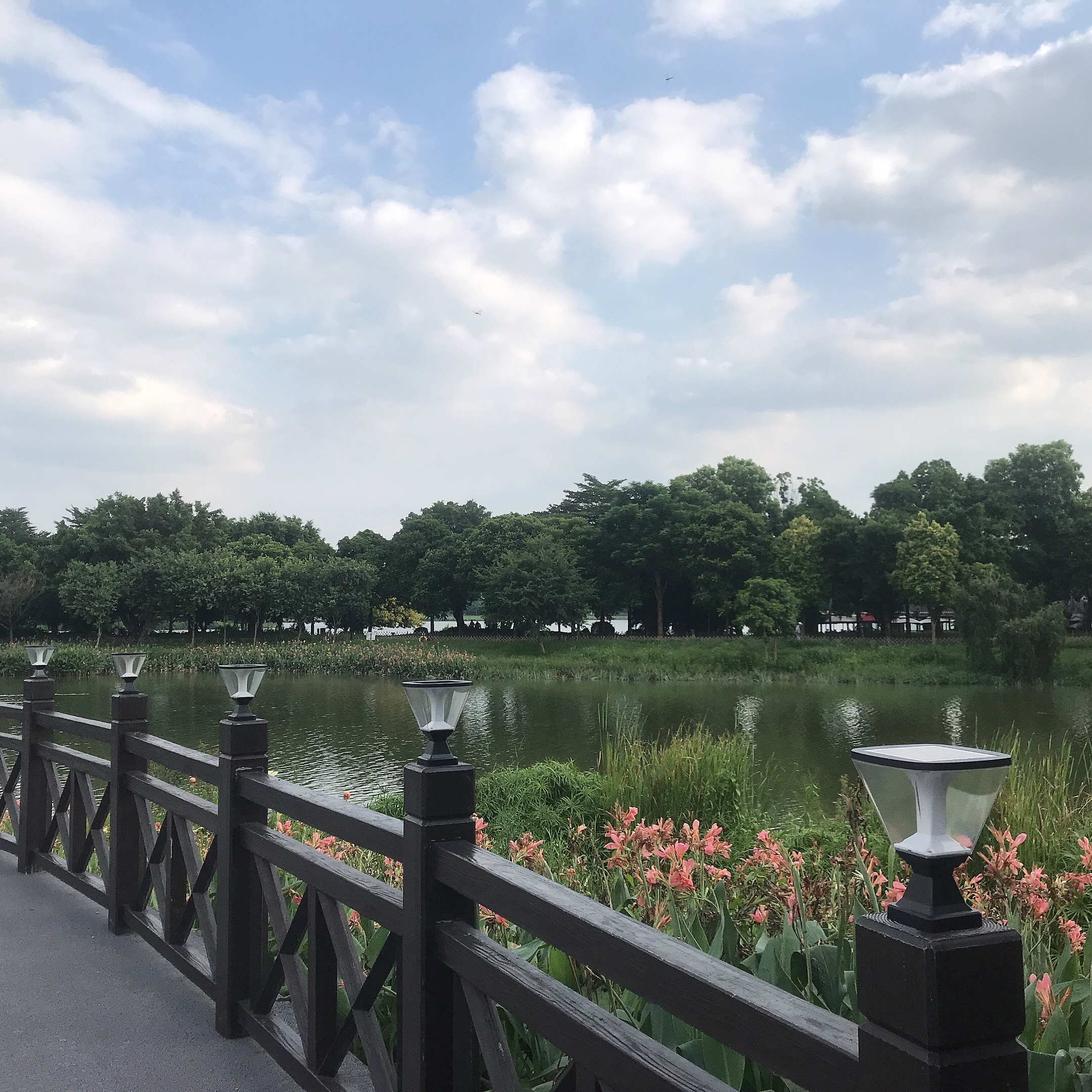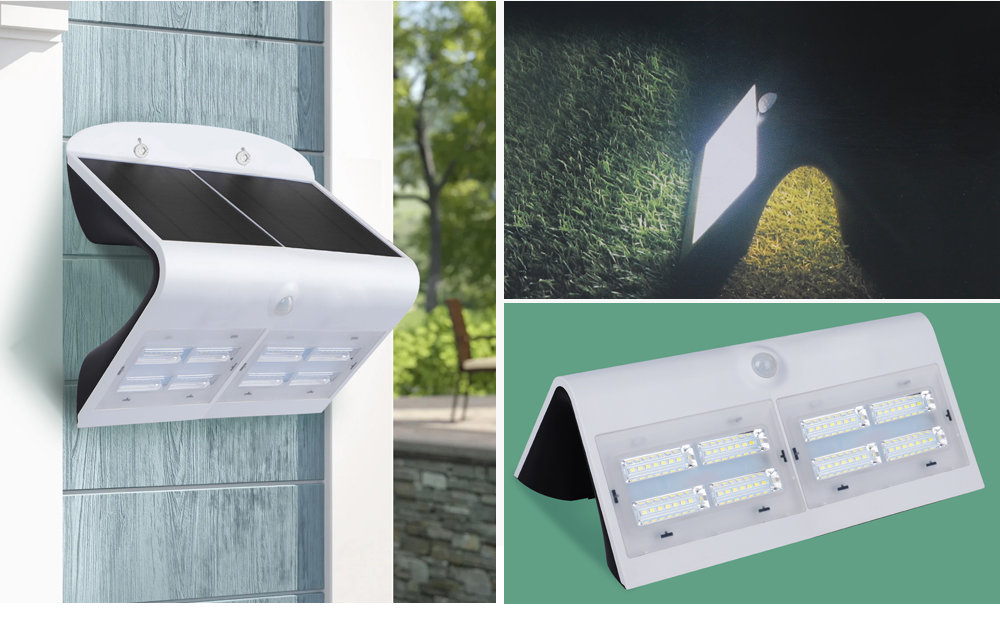If you want to enjoy your front or backyard, there are only so many hours in the day to do it. After night falls, if you don’t have the right lighting, it’s hard to take in your yard and all the hard work you’ve put into it. Thankfully, there are plenty of outdoor landscape lighting ideas to light up the night.
When it comes to outdoor lighting, there are a myriad of choices, and it can be tough to decide which to incorporate into your outdoor space. This handy guide will help you pick out some lighting ideas and take out some of the headache.
1. String lights
One option to help light up your yard is string lights, also known as fairy lights or holiday lights. These lights can be hung just about anywhere in your yard, wrapped around trees and posts, or strung above features like backyard patios.
String lights can make your yard feel like something straight out of a fairy tale and are great for downlighting. They come in LED and incandescent varieties, but LED is the sustainable option.
Pros of string lights:
- Easily customizable. String lights can be moved and rearranged however you like. Try making nice shapes and patterns, or use colored lights for added flair.
- Easy to install and maintain. All you have to do is hang up your lights and you’re done. Just make sure to use hooks instead of staples or tacks.
- Good for highlighting paths and focal points, such as flower beds and prized plants.
- They are good for moon lighting. String lights can help mimic natural moonlight with soft light bulbs and the right placement.
Cons of string lights:
- String lights need to be hung from something, and you may have to put up a post if there’s nothing suitable to use where you want to put them.
- They can be a fire hazard, especially with multiple lengths of lights.

2. Stake lights
Another good landscape lighting idea is stake lights, also called path lights. Stake lights are driven into the ground and provide lighting at ground level. Many are solar lights, requiring only sunlight to work, so you don’t need to use batteries or plug them into an outdoor electric socket. They make for good garden lights and can be moved and removed to your liking.
Pros of stake lights
Easy to install. All you have to do is put them in the ground and watch them light up the night.
Low cost. Stake lights are relatively cheap and won’t hike up your electric bill.
Good for path lighting and highlighting focal points, just like string lights, and can provide a nice uplighting effect.
Different varieties. There are various kinds of stake lights, from the standard lamp design to bollard lights, globes, and more.
3. Outdoor wall lamps
Another option is to install lamps on your home’s exterior. These require more work to install than other light fixtures but are worth the effort. They make for good accent lighting and downlighting and are a good start for a yard-wide lighting system.
Pros of wall lamps
- Provide lots of bright light. Outdoor wall lights are bright and can provide enough light to make your yard look like noon at nighttime.
- Add value to your home. Outdoor wall lamps add to a house’s curb appeal and can add a little extra to the listing if you decide to sell.
- Makes your home safer. Ne’er-do-wells and would-be burglars will think twice about targeting a house that’s all lit up.
- Different varieties. Outdoor wall lights come in a few different kinds, from sconces and lamps to spotlights and floodlights.
- Additional features. Many permanent light fixtures have features like dimmers, remote controls, and automatic shut-off, giving you more control over the lighting in your backyard landscaping.
Cons of wall lamps
- Difficult to install. Unless you’re an electrician, it’s best to hire someone to install these lights for you, as it’s complicated and mistakes with DIY can be costly.
- Limited illumination. Some wall lights will only provide light close to your house, or certain spots where they’re aimed at. Additional light sources might be needed for full yard coverage.
4. Uplights and downlights
Uplights are any lights that are placed on the ground and point upwards. Downlights on the other hand are hung up from something or installed in a wall or ceiling, and point downwards.
Pros of uplights and downlights
- Easy to install. Most uplights and downlights are small and portable, so you can place them anywhere in your yard you like without trouble.
- Affordable. Uplights and downlights come in solar and battery-powered varieties, so they won’t add on to your electric bill.
- Good for highlighting focal points. Uplights and downlights are great for highlighting the best areas of your yard. For example, any large trees you’re fond of, or a prize-winning plant.
Cons of uplights and downlights
- Tripping hazard. Take care not to put your uplights too close to paths, as you or someone else may trip over them.
- Limited illumination. Since uplights and downlights are designed to highlight certain things, they won’t provide much light to your yard as a whole.




















